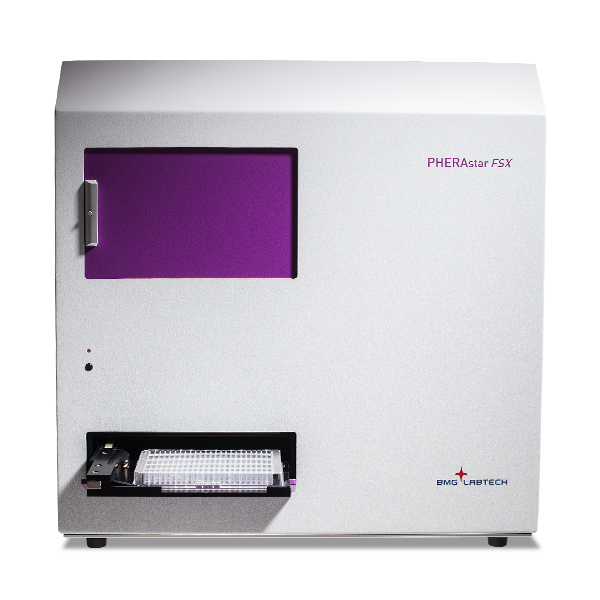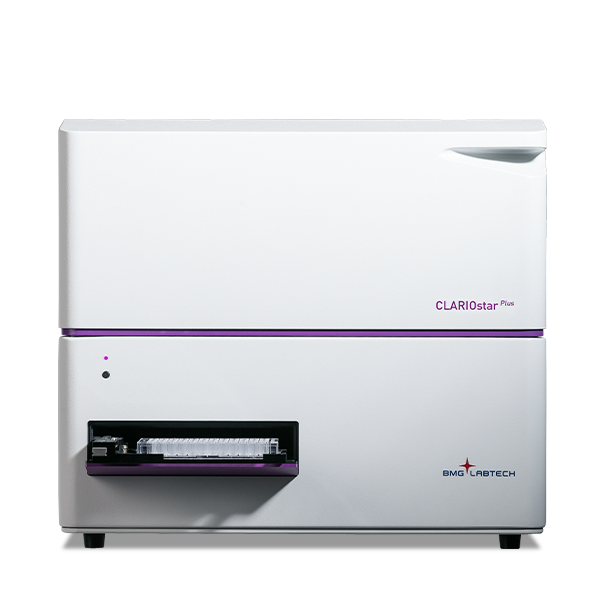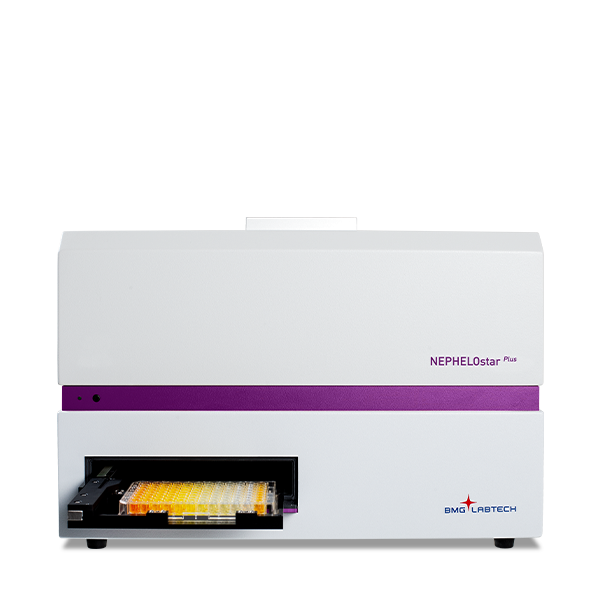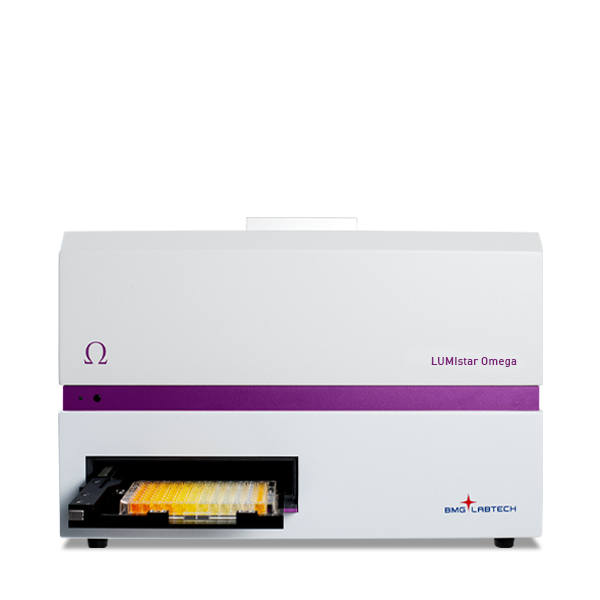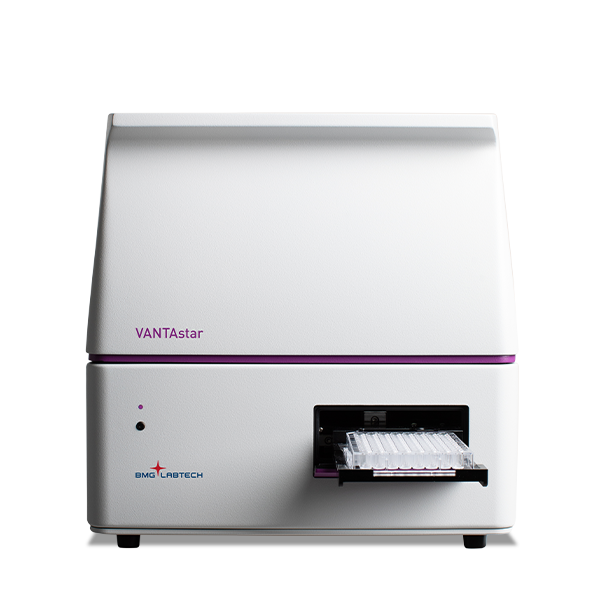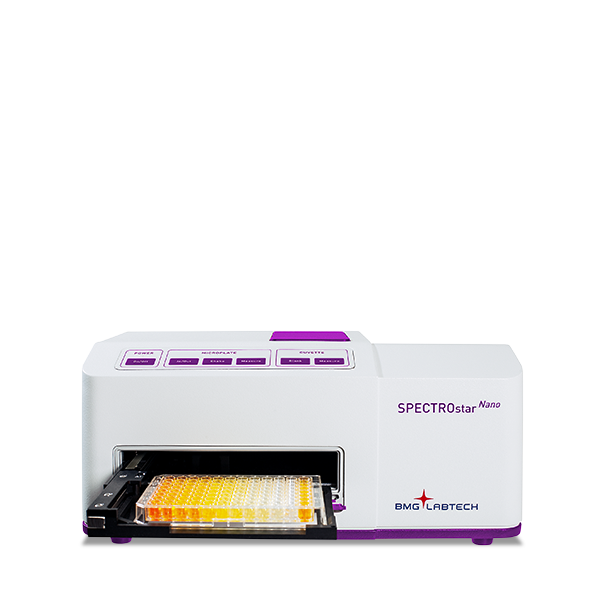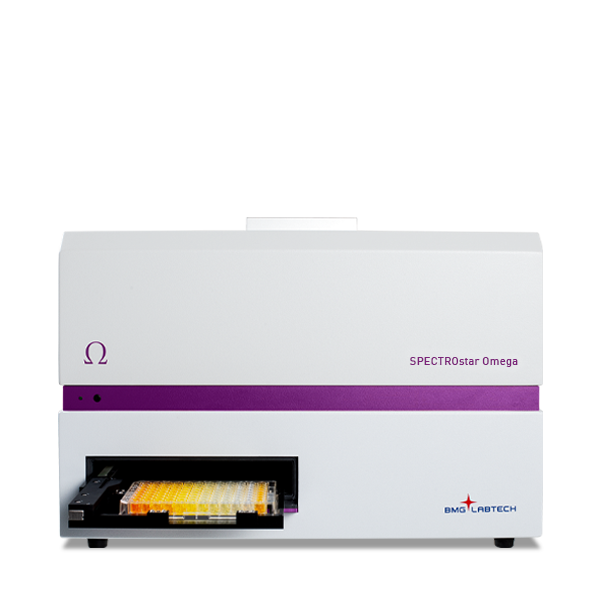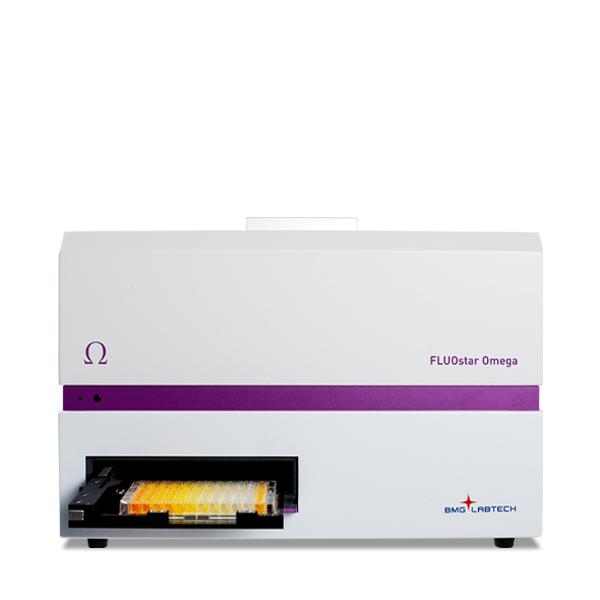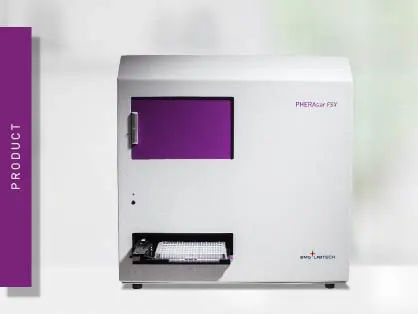
蛍光マイクロプレートリーダーの基本情報
蛍光マイクロプレートリーダーとは?
蛍光プレートリーダー(または蛍光マイクロプレートリーダー)は、マイクロプレート内の蛍光性試料を特定の波長の光で励起し、そこから放出される光子を検出・定量する機器です。
蛍光プレートリーダー(または蛍光マイクロプレートリーダー)は、マイクロプレート内の蛍光性試料を特定の波長の光で励起し、そこから放出される光子を検出・定量する機器です。
蛍光プレートリーダーは通常、蛍光強度および FRET の検出を目的としています。蛍光偏光、時間分解蛍光、TR-FRET などの他の蛍光ベースの測定モードは、シングルモードの蛍光マイクロプレートリーダーではたまにしか行われず、しかも感度も悪いかまったく検出できないという状況です。これらの検出モードをカバーするためには、吸光度や発光測定にも対応するマルチモードマイクロプレートリーダーが必要になります。
蛍光マイクロプレートリーダーは、通常、光源・励起波長選択用の光学系(フィルターおよび/またはモノクロメーター)・蛍光波長選択用の第2の光学系、そして検出器(通常は1つまたは複数の光電子増倍管(PMTs))を含みます。検出器は蛍光や発光によって発生した光子を電気に変換し、マイクロプレートリーダーによって定量化されます。このプロセスからの出力は、定量化された数値でになります。
吸光度とは対照的に、蛍光検出は絶対的な測定値ではありません。蛍光シグナルの強度は、別日に行った測定や異なる機器によって相対的な値として検出されます。そのため、蛍光プレートリーダーでは、試料から発せられる蛍光シグナルの単位はRFU(相対蛍光単位)を使用します。
蛍光プレートリーダーは、スタンドアローンの専用リーダーとして、またはマルチモードマイクロプレートリーダーの一部として、吸光度およ発光測定と組み合わせて使用することができます。
蛍光プレートリーダーは、学術生命科学研究、創薬・スクリーニング、臨床検査、合成生物学、食品・水質モニタリングなど、さまざまな分野のアッセイやアプリケーションで使用されています。
研究室に蛍光プレートリーダーが欲しいですか?
詳細情報・御見積依頼はこちらから
- Initial recommendation
- Detailed Recommendation

Get help selecting the right microplate reader
Configure your microplate reader and get an initial recommendation!

もし、新しい蛍光リーダー(シングル・マルチ)を検討中なら、精度に著しく影響するいくつかのポイントに考慮する必要があります。
感度
定量目的の点では一般的に、蛍光プレートリーダーの方が吸光リーダーより感度が高いです。しかし、感度の良い蛍光マイクロプレートリーダーは、より良い統計値・複製間のばらつきの少なさ・反応するサンプルと反応しないサンプル間のより大きなデルタ(距離)のデータを提供します。さらに、感度が高ければ、質の高い結果を得るために使用する試薬やサンプルの量を減らすことができ、結果的にアッセイのコストを削減することができます。
ダイナミックレンジ
蛍光強度検出ではサンプルは幅広い濃度範囲にわたります。蛍光プレートリーダーで測定されるシグナルは、薄暗いものから非常に明るいものまで、幅広いシグナル強度に及ぶ可能性があります。さらに、酵素や細胞を用いたカイネティックアッセイのサンプルは、時間の経過とともに最大シグナルが高くなるため、そのシグナル強度がどこまで増えるか予測することが困難な場合が多くあります。
このような場合、1回の測定条件ですべてのシグナルを取得することが困難な場合があります。非常に明るいサンプルは、マイクロプレートリーダーの蛍光検出器が飽和する場合があります。非常に暗いサンプルは、ブランクと区別がつかない場合があります。
広いダイナミックレンジを持つことで、1回の測定で非常に多様なサンプルデータを取得できます。また、正しい希釈倍率と蛍光ゲインの比率を見つけるために何度も試行錯誤を行うことによる試薬と時間の無駄を省くことができます。CLARIOstar PlusとVANTAstarに搭載されたEnhanced Dynamic Range機能は、市場最大のダイナミックレンジ(10の8乗桁)を実現し、非常に明るいシグナルと暗いシグナルを同一測定で調整なしに自動的に測定することを可能にします。
波長選択
蛍光マイクロプレートリーダーの波長選択機能は、励起と発光の両方に必須です。適切な波長を使用することにより、サンプルやマイクロプレートからの光散乱や自家蛍光に起因する非特異的なバックグラウンドやノイズを低減することができます。
波長選択のために、フィルターやモノクロメーターを使用することができます。フィルタの方が感度が高く、モノクロメーターの方が自由度が高いというのが一般的です。しかし、CLARIOstar PlusやVANTAstarに搭載されているLVF(Linear Variable Filter)モノクロメーターは、その例外です。LVFモノクロメーターはフィルターのような性能を持ち、CLARIOstar Plusはモノクロメーターベースのマイクロプレートリーダーとして市場で最も高感度なものとなっています。LVFモノクロメーターは、蛍光測定や発光測定に使用することができます。さらに、モノクロメーターは、励起または発光スキャンを行えます。
さらに、2つのチャンネルで二波長の蛍光を同時に検出する機能は、FRETアッセイに非常に有益です。このオプションは、測定時間を半減させ、データのばらつきを抑えることができます。同時デュアルエミッション(SDE)検出は、PHERAstar FSXでは標準搭載であり、LUMIstar OmegaとFLUOstar Omegaではオプション選択が可能となっています。
対応可能なプレート
基本的には96ウェルプレートでの測定が一般的ですが、1サンプルを複数ウェル用意する場合や貴重な試薬や時間を節約したい場合には、384ウェルや1536ウェルのフォーマットを使用することもできます。ただし、使用するマルチモードマイクロプレートリーダーが、その使用予定のプレートフォーマットを読み取ることができるかを確認してください。また、吸光度・蛍光・発光の検出には、それぞれ異なるタイプ(色)のマイクロプレートが必要です。
試薬インジェクター
蛍光プレートリーダーをお探しの場合、実施したいアッセイの性質を考慮する必要があります。酵素カイネティックアッセイやリアルタイムセルベース反応の場合、試薬インジェクターの使用が有効です。試薬を手動でウェルに分注することは、重要な反応データを失う危険性があります。特にフラッシュ反応の場合、探している事象が検出される前に既に消失している可能性があります。試薬インジェクターを装備した当社の蛍光プレートリーダーでは、ウェルへの試薬注入とシグナル検出を同時に行い、次のウェルへ移動することができます。
環境制御
長時間の生細胞を必要とする研究において蛍光マイクロプレートリーダーとインキュベーターの間でマイクロプレートを行き来させたくない場合、選択したリーダーが内部ガス環境を制御できるか確認する必要があります。
Omegaシリーズ・VANTAstar・CLARIOstar Plusには、当社のAtmospheric Control Unit(ACU)を搭載することができます。ACUは、生細胞を扱うアプリケーションに理想的な環境を提供します。ACUは、マイクロプレートリーダーチャンバー内のO2およびCO2ガスレベルを独立して調節します。攪拌機能および温度インキュベーションと組み合わせることで、ACUは標準的な細胞増殖から低酸素アッセイまで、あらゆるセルベースアッセイのための真の「ウォークアウェイ」ソリューションを提供します。
データ処理用ソフトウェア
一般的に、マイクロプレートリーダーを実行するソフトウェアは、パッケージの中で非常に過小評価されている部分です。ソフトウェアはリーダーの制御用のみで、データは生値を出力するだけというリーダーもいくつかあります。一方、非常に複雑なデータ解析を行うソフトウェアもあります。
包括的で使いやすく、柔軟性の高いソフトウェアは有益です。検出やデータ解析を簡素化することで、装置を最大限に活用することができます。
蛍光アッセイに最も有用な計算方法として、ブランクの自動補正、標準曲線に基づく濃度の自動計算、KmやVmaxなどの酵素定数などがあります。
BMG LABTECH社のソフトウェアパッケージには、アッセイに特異的なプロトコルとデータ処理のテンプレートがクイックランアイコンとして登録されています。これらの専用ソリューションにより、マウスを1回クリックするだけでデータ取得から解析までを行うことができ、研究者は迅速かつ容易に実験を行うことができます。

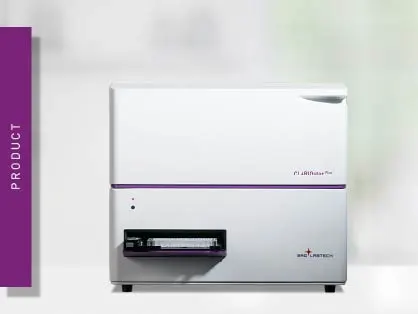
CLARIOstar Plus
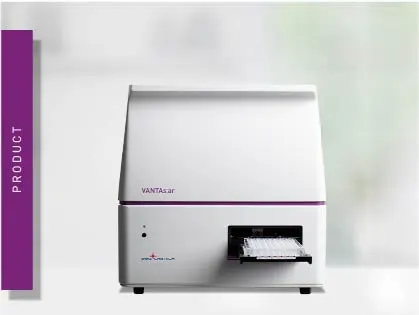
VANTAstar
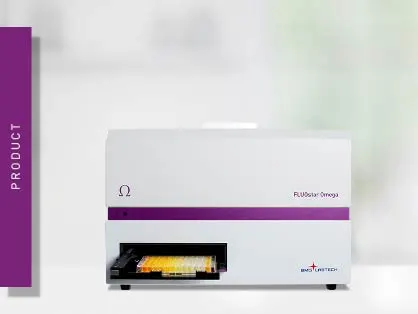
Omega Series
蛍光プレートリーダーで測定できるアッセイは?
蛍光測定はライフサイエンスにおいて最も一般的な検出モードの一つです。そのため、蛍光マイクロプレートリーダーは、シングルモード・マルチモードともに、さまざまなアッセイに対応できるよう、数多くのキットや試薬が販売されています。
蛍光強度の一般的な用途は、DNA/RNA定量・カルシウムアッセイ(フラックスとシグナル)・酵素活性・遺伝子発現・GPCRのセカンドメッセンジャーシグナル・タンパク質-核酸相互作用、トリプトファン定量・分子間相互作用・廃水分析用バイオセンサーなどがあります。
細胞ベースのアプリケーションには、アポトーシスアッセイ・細胞増殖・トランスフェクション効率・細胞毒性などが含まれます。
タンパク質の相互作用は、蛍光共鳴エネルギー移動法(Fluorescence Resonance Energy Transfer: FRET)によって検出することができます。FRETは、ドナーとアクセプター間のエネルギー移動に基づく2色素蛍光検出アッセイです。ドナーとアクセプターが近接している場合(10-100Å)、ドナーの蛍光色素の励起により、アクセプターの蛍光色素にエネルギーが伝達され、直接励起されることなく発光が得られます。
蛍光強度/FRET測定例:
BMG LABTECH社製 蛍光プレートリーダーで測定した蛍光強度およびFRETの例は以下の通り:
- AN 301: Simultaneous detection of GPCR second messengers in living cells
- AN 293: Moss cells as expression system for biopharmaceuticals
- AN 253: Real-time calcium flux measurements in iPSC derived 3D heart tissue
蛍光測定のアプリケーションノートの一覧を見る
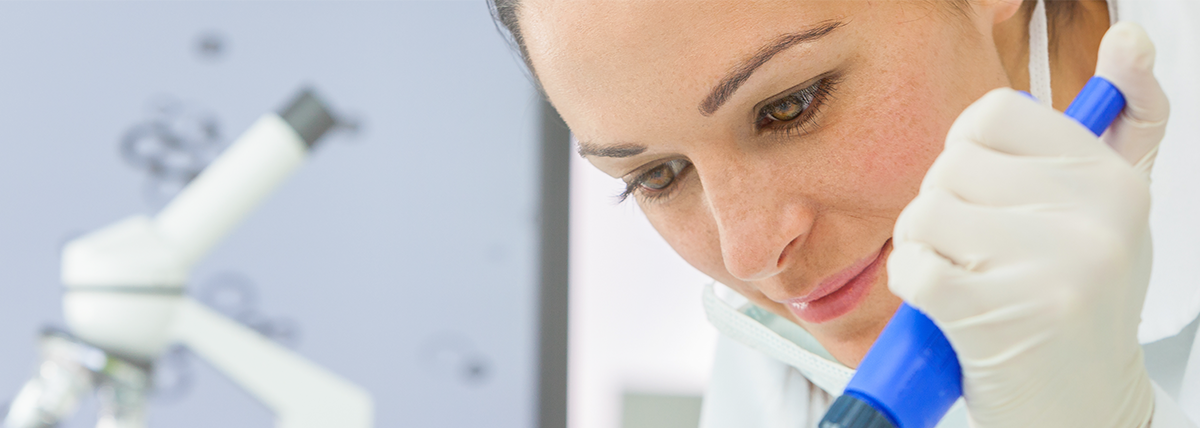
BMG LABTECH社の 蛍光マイクロプレートリーダーを選ぶ理由は?
BMG LABTECH社はマイクロプレートリーダーの製造を専門としており、30年以上にわたるマイクロプレートリーダー技術に関する専門知識を蓄積してきています。この知識は、私たちの機器が提供する結果に表れており、機種選定の重要な要素となっています。BMG LABTECHリーダーのユーザーは、感度・スピード・柔軟性において最高の結果を得ることができると信頼しています。さらに、当社のプレートリーダーは、長年にわたって最適なパフォーマンスを提供できるよう開発されています。当社の機器はドイツで開発・製造・テストされ、非常に堅牢で信頼できるように作られています。
必要なものから購入できる
各測定モードはモジュール化されているため、すべての蛍光プレートリーダーは異なる検出モードをオプション選択することができ、多くのアプリケーションをカバーします。また、いつでも機能のアップグレードが可能です。つまり、最初に使用しないであろうオプションを選択しておかなくても、必要になったときにそのオプションを追加することが可能なのです。
万全のサービスとサポート
私たちは、お客様に最高のサービスを提供するために努力しています。 すべての販売エリアの担当者は、高度な訓練を受けた技術スペシャリストで、ハードウェア・ソフトウェアおよびほとんどのアプリケーションに関する質問の両方をサポートすることができます。また、複雑なアプリケーションソリューションについては、ドイツ本社のアプリケーションスペシャリストのチームが対応します。
マルチユーザーソフトウェアパッケージ
すべての機器にはマルチユーザーソフトウェアパッケージが付属しており、ライセンスを購入することなく、リーダーを使用したいユーザーが必要とする数だけコンピュータにインストールすることができます。マイクロプレートリーダーのソフトウェアアップデートは、購入後12ヶ月間は無料です。


